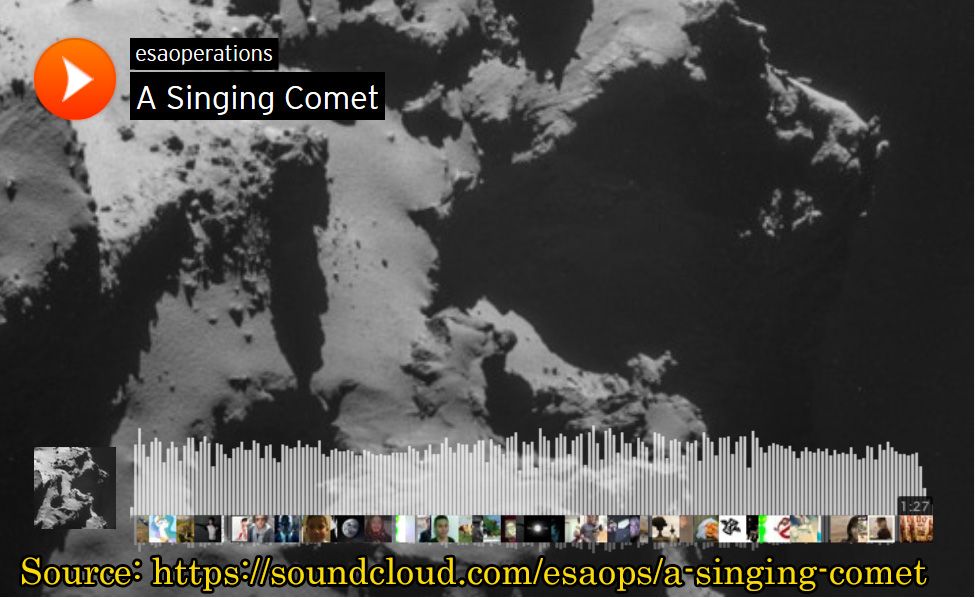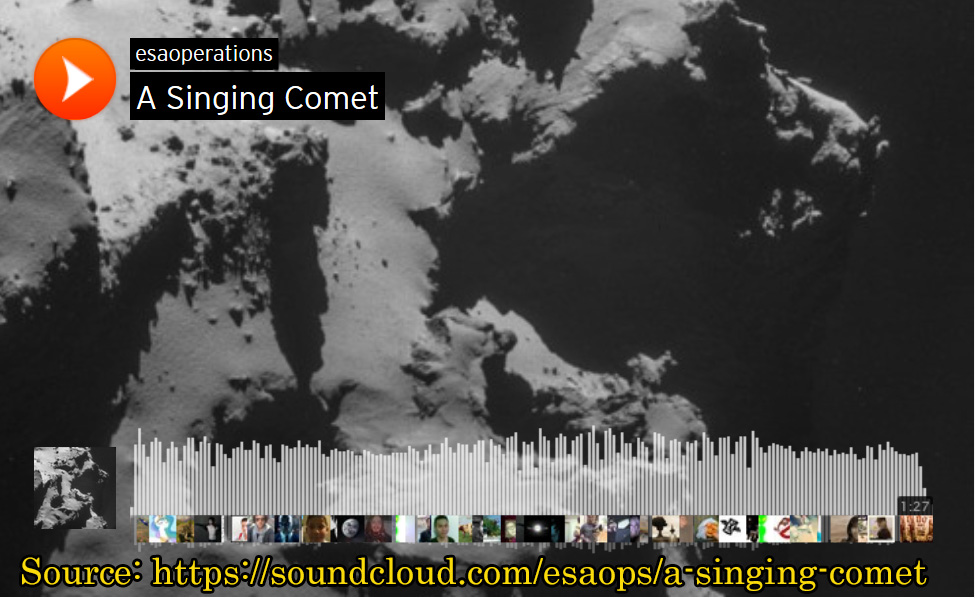
Mystery signal from Rosetta comet confirmed by European Space Agency
The European Space Agency (ESA) today confirmed that it was receiving a mysterious signal from Comet 67P/Churyumov-Gerasimenko. In a post on its live streaming website, it described the signal as a “mystery song” and uploaded a recording with the caption: “Hear our comet sing.” The confirmation follows months of rumors that the Rosetta mission was originally sent to explore a radio signal from the comet first detected 20 years ago. The November 12 landing of the Rosetta mission’s Philae probe will be live streamed to the world. The ESA’s surprise announcement hints that the significance of the landing may go well beyond the historic first of humanity landing a probe on a comet.
Here is what the ESA said in its December 11 post:
Rosetta’s Plasma Consortium (RPC) has uncovered a mysterious ‘song’ that Comet 67P/Churyumov-Gerasimenko is singing into space. The comet seems to be emitting a ‘song’ in the form of oscillations in the magnetic field in the comet’s environment. It is being sung at 40-50 millihertz, far below human hearing. To make the music audible to the human ear, the frequencies have been increased in this recording…
There was a media frenzy back on September 29 from a UFO Sightings Daily post titled: “NASA Records Radio Signals Coming From Comet 67P For Over 20 Years!” The author, Scott Waring, cited an anonymous ESA whistleblower who wrote in an email that the mystery signal was detected 20 years ago by NASA and this was the true reason behind the Rosetta mission.
Waring and others making similar claims were criticized by many in the mainstream media who debunked the idea of a mysterious radio signal coming from comet 67P. Huffington Post writer, Michael Rundle, for example, wrote:
If the comet is emitting radio waves, why has no one else been able to tune it?… If the radio waves were picked up by NASA, why did they leave the space mission to investigate to the European Space Agency?
Well guess what? The ESA today confirmed that Waring was right and Rundle was wrong. The mystery signal is in fact “a song” being transmitted by the comet, presumably an oscillation in its magnetic field according to the ESA. The ESA did not say when it first recorded the song, but it does lend plausibility to the claims of the anonymous ESA whistlelower. The big question now is whether the song is a random composition of nature as the ESA implies, or was created by an extraterrestrial intelligence.
A September 10 photo from the Rosetta mission showed what appeared to be a radio tower and a possible UFO on the surface of Comet 67P. The photo was one among others held by the ESA that the anonymous ESA whistleblower referred to as revealing some of the mystery behind Comet 67P. Could the alleged tower be the source of the mystery signal, and does the UFO suggest an extraterrestrial intelligence is involved?
If the mystery signal today confirmed by the ESA was detected 20 years ago and led to the Rosetta mission, then it stands to reason that NASA and ESA believed that the signal was more than a random composition by nature. If extraterrestrials are wanting to announce themselves to a disbelieving world, transmitting a beautiful song from a remote comet does appear to be an elegant form of First Contact.
© Michael E. Salla, Ph.D. Copyright Notice
Further Reading:
- Rosetta comet radio signals and UFO claims spark controversy
- New scientific study claims extraterrestrial fossil found in Sri Lanka meteor
- Russians find extraterrestrial microbes on International Space Station
- Extraterrestrial fossils found in meteorite according to scientific team (Photos)
- NASA scientist claims conclusive proof of extraterrestrial life
Comet 67P, European Space Agency, extraterrestrial life, NASA
